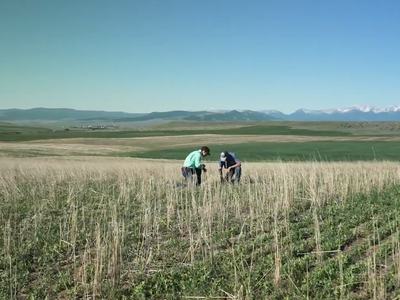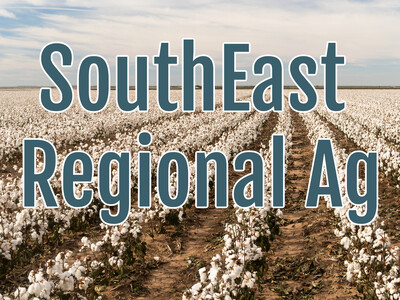Cereal fungus
A cool and wet spring has created ideal growing conditions for Idaho cereal crops, but the weather has also favored a pair of important fungal diseases affecting grain, a University of Idaho researcher warns.Stripe rust, which can be identified by the yellow-orange color of its spores, was recently spotted in a test plot in the Magic Valley.
Strawbreaker foot rot is widespread in irrigated fall wheat throughout eastern Idaho.
Juliet Marshall, a professor of plant pathology who heads U of I’s Department of Plant Sciences, explained strawbreaker foot rot has been especially prevalent in fields in which growers planted at a heavy seeding rate in hopes of boosting yields.
“I have been visiting a couple of fields and getting several phone calls and pictures from different growers and consultants that show some odd discoloration in the crop,” Marshall said of strawbreaker foot rot.
Marshall has already seen lodging – when plant stalks grow too tall and tip over – in winter triticale and expects lodging will also surface as a rampant problem in fall wheat and barley, especially in heavily seeded fields.
Prime conditions have helped eastern Idaho cereal crops grow vigorously, but competition has caused them to become too tall and thin – at the expense of developing a robust root system – in heavily seeded fields.
This makes the plants highly susceptible to lodging on windy days. Strawbreaker foot rot, commonly known as eyespot, can also thrive in dense stands with poor airflow. It’s characterized by a browning of the lower stem and yellowish, eye-shaped lesions on stems and leaves.
“The fields where I see the worst problems are the fields that were overly, heavily seeded,” Marshall said. “I’m hearing as much as 150 pounds of seed planted per acre of winter wheat and barley. It absolutely doesn’t need to be planted that heavily because it will increase diseases and lodging.”
Marshall emphasized that there’s no yield advantage to a heavy seeding rate, as plants can produce additional stems off of their main shoot, called tillers, to compensate for light seeding.
When the weather turns hot, Marshall also expects to see wilting and burning of flag leaves, with necrotic and chlorotic spots on foliage, in densely seeded fields.
The leaf damage results from the inability of plants with poorly developed roots to keep pace with evapotranspiration.
“People might think it’s a leaf disease. It’s not a leaf disease; it’s roots that can’t keep up with plant growth when the temperature rises,” Marshall said.
The stripe rust infection was confirmed on a breeding line in a test plot near Filer.
The breeding line was significantly infected but infections were not widespread throughout the research field.
Although cereal crops are progressing about 10 days to two weeks behind last season’s pace,
Marshall warned most fall-planted fields are already past flowering and are past the window for applying fungicides.
She said spring wheat fields will be most at risk of stripe rust infection, and fungicide applications will likely not be required for moderately resistant and resistant varieties.
“With the spring weather perfect for small grain production, it is no surprise that stripe rust was finally confirmed in southern Idaho,” Marshall said.
Cool and wet conditions are also conducive to the spread of a third important fungal disease of grains – take-all.
Marshall hasn’t seen take-all in fields yet, but she’ll be watching closely for it. Take-all causes a blackening of the stem base.
Marshall’s research plots in eastern Idaho are all lush and healthy.
She expects this will be an exceptional season for growers who diversify their rotations, follow sound agronomic practices and avoid crop diseases.
“Most of us agree it’s going to be a very good-yielding year,” Marshall said.













